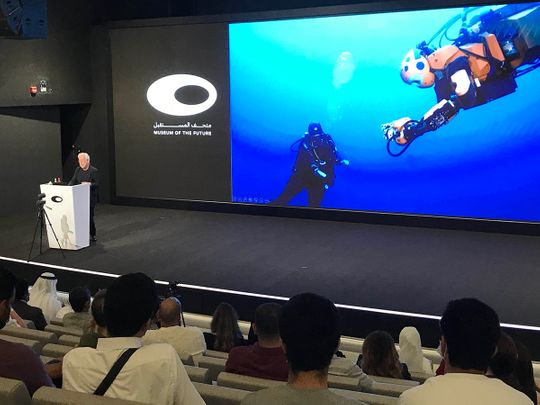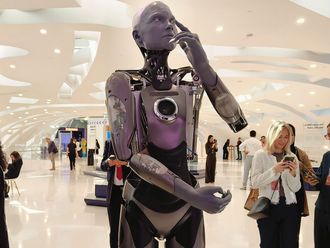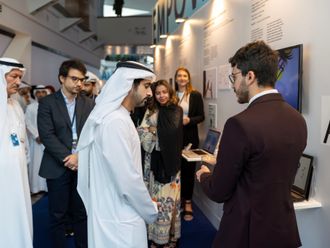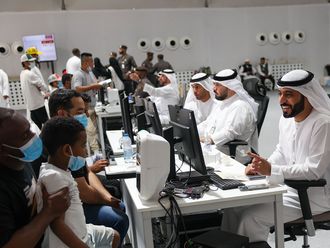
Dubai: A futuristic era of human-robot collaboration was highlighted at the second instalment of ‘Future Talks’ series hosted at Dubai’s latest iconic landmark, the Museum of the Future, here on Friday.
After opening to the world on February 22, the Museum of the Future is hosting a series of talks with innovators, scientists and prominent figures from leading industries where they share their vision of the future.
Oussama Khatib, professor of Computer Science and director of the Robotics Lab at Stanford University, spoke about his research, focusing on human-centred robotics, artificial intelligence (AI), human motion synthesis and haptic interactions or the science and technology of transmitting and understanding information through touch.
Humanoid deep-sea diver
During his talk, he presented OceanOne, the world’s first humanoid submarine robotic diver, exploring a 17th century shipwreck. The flagship robot, however, did not complete the task autonomously as it was “piloted” remotely by humans.
What Prof Khatib showcased was the successful use of haptic feedback systems. He noted OceanOne allowed humans to explore the depths of the oceans safely and precisely.
He said OceanOne, a robot resembling a human being, can descend 1,000 metres. It is powered by AI and imbued with haptic skills learned by studying human motions. Humans using a set of joysticks to control OceanOn can feel the vibrations or motions, thus effectively recreating a sense of touch.
OceanOne’s body is like any robotic submersible, but the technology is centred on its hands that are fitted with sensors that relay feedback to human pilots.
Human-robot collaboration
Prof Khatib’s presentation proved “how humans and robots can collaborate to reach new resources, build and maintain infrastructure and perform disaster prevention tasks and recovery operations — be it deep in the oceans and mines, at mountain tops or in space”.
“We can remove workers from dangerous places and put them in a safer place, but still they can perform the tasks,” noted Prof Khatib, adding: “Humans can provide intuition and expertise and cognitive abilities to the robot. With their synergy, robots can do things in places that are very dangerous for a human, but the human can still accomplish the task.

Future talks
The next ‘Future Talks’ is scheduled for Saturday and the topic is ‘Mixed Reality and the Metaverse’, with Alex Kipman, technical fellow and corporate vice-president of AI and Mixed Reality at Microsoft, as the main speaker.
The first session of ‘Future Talks’ was held on Thursday with Changpeng Zhao, founder and CEO of Binance, the world’s biggest bitcoin and altcoin crypto exchange by volume, speaking about cryptocurrencies and the future of digital finance.












